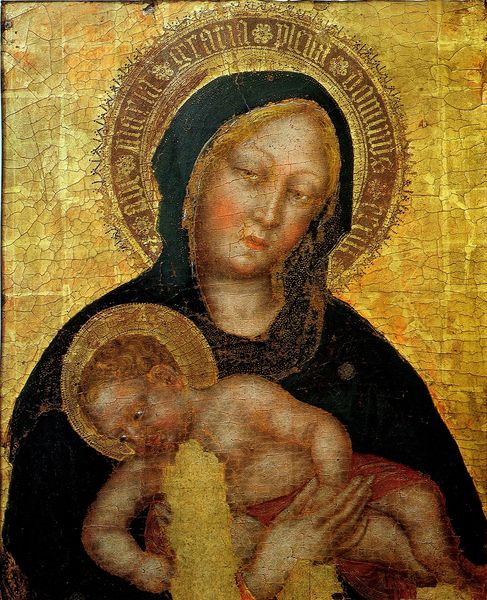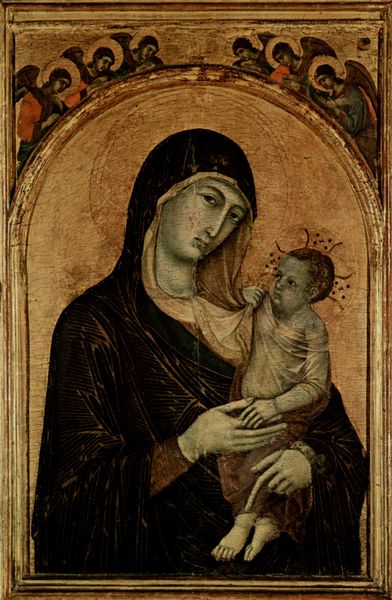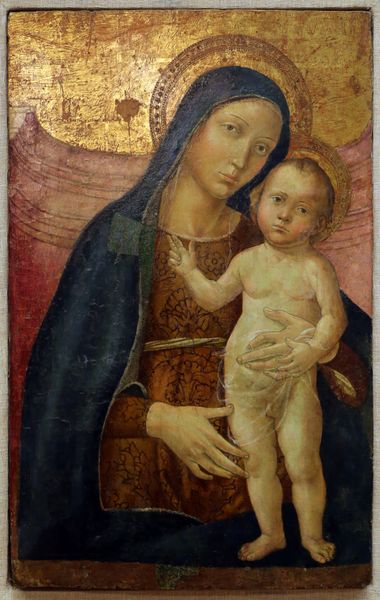
#
gouache
#
possibly oil pastel
#
charcoal art
#
oil painting
#
coffee painting
#
underpainting
#
pastel chalk drawing
#
painterly
#
painting painterly
#
watercolor
Copyright: Public domain
Curator: Standing before us is a detail from Gentile Bellini’s "Trittico della Natività," dating back to 1470. The scene radiates with quiet reverence, doesn't it? Editor: It does. What strikes me immediately is the layering—the build-up of the medium, the gouache maybe, to achieve this incredible luminosity. It speaks volumes about Bellini's understanding of his materials. Curator: Indeed. Bellini, as part of the celebrated Venetian painting dynasty, understood how to convey complex social and religious ideas within the artistic conventions of his era. Consider how the Virgin’s downward gaze and the child's serene expression communicate maternal devotion, reflecting both Christian piety and emerging humanist values. Editor: And we shouldn’t ignore the socio-economic conditions allowing for such skilled craftsmanship. Someone had to source the pigments, prepare the panels, manage the studio, things easily glossed over in art history. Was Bellini involved with any artisan workshops? Curator: Absolutely, he likely had apprentices helping with various stages, although much less is known of Gentile than of his brother Giovanni in terms of workshop practice and delegation. Now look at how Bellini has positioned Mary, not merely as a mother but as the embodiment of grace within a patriarchal system. Her position holds tremendous weight politically. Editor: Politically and economically! Patrons dictated much in those days, choosing sizes, pigments, placement. It's humbling to consider Bellini navigating that world, procuring resources like lapis lazuli to translate those requirements, mixing materials and processes. Curator: True, although this panel's palette and composition seem very typical of what Bellini might himself propose or recommend for the patron's selection. Bellini worked for both wealthy religious organizations, powerful rulers and influential families. Can we truly see any signs of subversion here? Is he only reproducing an accepted aesthetic? Editor: I see dedication, first and foremost—years of apprenticing to achieve such fluency with his tools. Also, considering who funded these panels helps me acknowledge and appreciate it from more complex positions. And ultimately, that skill offered Bellini himself the opportunity for advancement within his social structure, I can almost touch that labour by just watching to that painting. Curator: And that act of labor has now brought us both into conversation across centuries, which might be an amazing thing for one family of Venetian painters. Editor: Indeed! It all starts with raw materials transformed by hand and social context which adds meaning and helps us see the history through his production.
Comments
No comments
Be the first to comment and join the conversation on the ultimate creative platform.













